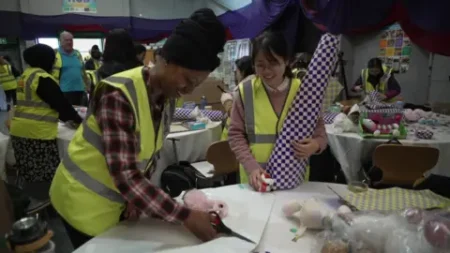The Boeing 787 Dreamliner, often highlighted as one of the safest aircraft in service, recently faced scrutiny following a tragic incident involving Air India flight 171 that resulted in over 270 fatalities. Despite its longstanding reputation for safety—having operated for nearly 15 years without a significant incident and transporting more than a billion passengers—this catastrophic event has cast a shadow over its legacy and raised questions about its design and production quality standards.
The crash of flight 171, which occurred just thirty seconds after takeoff, has led to intense investigations and the recovery of fly data. This scrutiny is compounded by the fact that the Dreamliner has not only been lauded for its innovative engineering and fuel efficiency but has also been marred by allegations of quality control issues, particularly voiced by whistleblowers with ties to the aircraft’s production.
For years, the 787 was celebrated for its advanced design, utilizing materials like carbon fiber composites that differentiate it from previous models and significantly improving fuel efficiency. However, issues arose early in its operational history, notably when a series of lithium-ion battery fires prompted the grounding of the fleet, revealing vulnerabilities that posed serious threats to safety. Subsequent reviews identified further manufacturing defects, which have resulted in disrupted delivery schedules and heightened inspections of assembly practices.
Former quality control manager John Barnett is among the most vocal critics of Boeing’s quality assurance processes, claiming that the pressure to expedite production led to the erosion of safety protocols. Barnett alleged that employees sometimes bypassed critical checks, neglecting to track parts properly or using defective components in the interest of meeting production schedules. Similarly, another whistleblower, Cynthia Kitchens, testified to systemic issues of substandard components being improperly utilized, raising alarms about potential risks hidden within the aircraft already in service.
In light of the most recent tragedy, numerous experts and analysts have revisited the aircraft’s lengthy operational history. Richard Aboulafia, an aviation analyst, downplayed the likelihood that serious faults would go unnoticed after 16 years of safe operation and pointed to the rigorous oversight that has become more prevalent in recent years post-737 Max crises. Nonetheless, he also acknowledged that recent incidents have unveiled ongoing concerns about quality control, particularly with the production line established in South Carolina as Boeing sought to reduce costs in a competitive market.
While Boeing has sought to reinforce its manufacturing protocols, criticism persists regarding the structural integrity of the aircraft. Current employee Sam Salehpour substantiated claims of rushed assembly processes leading to unsafe conditions, stating that gaps in fuselage joints could result in catastrophic failures. Boeing’s reluctance to acknowledge these claims, combined with its historical pressure to prioritize speed over safety, has left lingering doubts among the aviation community.
The attention drawn by the Air India crash could precipitate renewed regulatory scrutiny, prompting an extensive review of production standards not only for the 787 but across Boeing’s lineup. However, many aviation experts maintain faith in the 787’s overall track record. While incidents have raised critical concerns, the aircraft has, until now, maintained a credible safety reputation.
In conclusion, the future of the Boeing 787 Dreamliner remains uncertain as the consequences of the recent crash unfold. Investigators continue to delve into the causes of the Air India incident, while experts and stakeholders alike ponder the implications for aviation safety. Factors such as management, production integrity, and regulatory oversight will influence Boeing’s trajectory as it grapples with past allegations and strives to ensure that the safety of passengers remains paramount amidst challenges and scandals in the industry.











